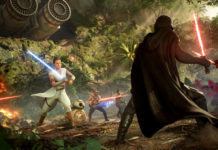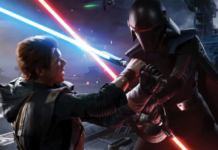Wanting a follow through from GameZone’s interview with Playdek’s Joel Goodman about Unsung Story: Tale of Guardians? Since you answered yes, let me point you towards Playdek’s own Q&A with Yasumi Matsuno about design. Matsuno is the genius behind many classic tactic games such as Tactics Ogre: Let us Cling Together and Final Fantasy Tactics – he knows the genre.
In this Q&A, Matsuno talks about just what sort of game Unsung Story is, an idea of how long it will be, details on the different sections of the game, character design, and a whole lot about class design. Definitely check it out either below or from the Kickstarter page. Only eleven more days with approximately $150,000 to go, they got this.
Q: What kind of game is Unsung Story? What genre is it?
A: Like other titles I’ve worked on in the past such as Final Fantasy Tactics and Tactics Ogre, Unsung Story will be a tactical RPG that uses a turn-based system where each unit (not each side) has its own turn. As we originally began development on this game for iOS/Android tablets, we expect the game systems at launch to be as simple as possible and free of any overly complicated mechanics. That said, with the success of this Kickstarter we fully intend to expand that gameplay, incorporating our backer’s ideas into the final gameplay experience.
Q: How long will the game be?
A: The game will be composed of several episodes, each of which is like a short story. Each episode will include about four to six stages, and at launch we plan to have about five episodes in total. So based on this, there should be somewhere around twenty-five playable stages.
Q: Could you give us more details on these episodes?
A: In a distant age, war broke out between two great powers in the fantasy world of Rasfalia. The ensuing struggle lasted seventy-seven years, and would later be known as the Jelamond Uprising. Numerous heroes were born in the course of the Jelamond Uprising. Some fought bravely for half a century, while others gave their lives in the briefest of moments. The story of each of these heroes is what we’re calling an episode. By joining them in their battles that span the course of the war, players will see for themselves if these heroes are truly worthy of the glory history has accorded them. While there are five episodes, each revolving around a separate hero, planned for launch, while the game is live, we intend to continue expanding various game systems and bringing out additional episodes that showcase these systems.
Q: Who will the main character be?
A: There is no main character such as Ramza (Final Fantasy Tactics) or Denam (Tactics Ogre). Players will assume control of a group of common warriors and take part in battles from episodes spanning the course of the war.
Q: What kind of battle system will the game have?
A: We’re keeping the details close to our vest for now, but it shouldn’t differ dramatically from past titles such as Final Fantasy Tactics or Tactics Ogre. It will be a turn-based system that places importance on the speed of each unit, with faster units acting first. Battles will unfold as units move, attack, and take other actions. The game will include multiple character classes. By leveling up, units will learn various new skills for their class. This arsenal of skills will be their means to defeat the enemy.
Q: What classes will be in the game?
A: Classes will fall into one of three broad categories:
- Warriors that fight with brawn.
- Mages that specialize in spells.
- Monsters that excel at special attacks.
With these three categories in mind, we plan to have the following five primary class-types available at launch. (*Note that these are subject to change).
- Attackers – Fighters that emphasizes attack power. They fight with longswords, massive axes, spears, and maces. The sub-class names will vary with the type of equipment and weapons they use (Warrior, Fencer, Berserker, Archer, etc.).
- Defenders – Fighters that emphasize defense. Equipped with a shield, they will protect their allies from enemy attacks. The sub-class names will vary with the type of equipment and weapons they use (Knight, Hoplite, etc.).
- Mages – Magic-users that wield offensive and support magic. The sub-class names will vary with the type of equipment and weapons they use (Wizard, Enchanter, etc.).
- Healers – Magic-users that wield defensive and healing magic. The sub-class names will vary with the type of equipment and weapons they use (Cleric, Alchemist, etc.).
- Tamers – Characters that command mythical beasts and monsters. The sub-class names will vary with the type of equipment and weapons they use (Beast Tamer, Dragon Tamer, etc.).
Units gain levels in each of these five primary class-types.
So for example, if there was a character named “Yazz,” he might be a Lv. 10 Attacker, Lv. 20 Defender, Lv. 17 Mage, Lv. 12 Healer, and Lv. 4 Tamer.
Q: Will units be able to change classes? If so, what will the class change system be?
A: Each unit will be able to freely switch between classes. There are no particular prerequisites for this, however, since equipment and weapons determine class, the equipment your party has available will determine the number of available classes. (*So if you have five Attacker weapons, you can have five Attackers.)
Q: In the primary class descriptions, you wrote that “sub-class names will vary with the type of equipment and weapons” units use. What does this mean? We want details!
A: This game will include a variety of weapons. There will be familiar weapons such as short swords, daggers, and gladii, as well as wooden staves, clerics’ staves, and many, many more. What’s important is that each weapon will belong to one of the primary classes.
For example, the short sword may be a Defender weapon, the dagger and gladius may belong to the Attacker, the wooden staff might be a Mage weapon, the cleric’s staff might be a Healer weapon, and so on. The weapon a unit equips will determine its primary class, and any experience points earned will be applied to levels for that class. Building on this, I’ll explain what I mean by “sub-class names will vary with the type of equipment and weapons.” I mentioned that the short sword is a Defender weapon, so equipping a short sword would make a unit’s primary class Defender. Furthermore, the short sword is a weapon of the Knight sub-class, so by equipping that short sword, the unit changes to become a Knight.
By the same token, equipping a gladius would make a unit’s primary class Attacker, and its sub-class Warrior. You can equip a different sub-class weapon belonging to the same primary class and still earn experience points toward that primary class.
For example, equipping two different Defender weapons, the Knight’s short sword or the Hoplite’s short spear, will both earn experience points toward the Defender primary class level.
You might wonder what makes the sub-classes different. The answer is that their abilities in battle will vary. Though they’ll have different stats such as VIT and STR, the key difference is in the skills they’ll be able to use. This is extremely important because the skills a unit can learn when leveling up depend on its sub-class at the time. So for example a unit that turns Lv. 8 as a Knight might be able to learn the Rampart skill (temporarily raise the defense of nearby allies), while a unit that turns Lv. 8 as a Hoplite would be able to learn the Passion skill (temporarily raise her own defense), sending the unit in two very different directions. Essentially, the system allows you to shape a unit’s development by choosing which sub-class it is, and in turn what skills it learns. This gives each character its own identity.







